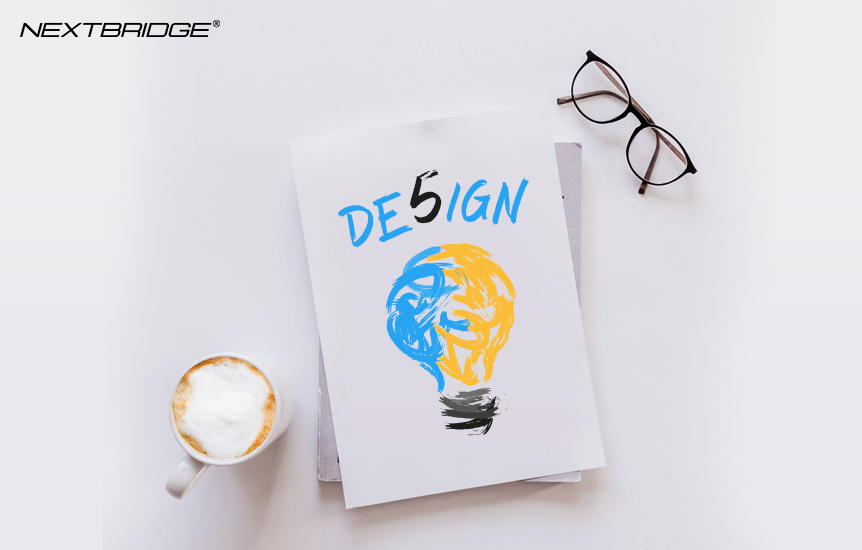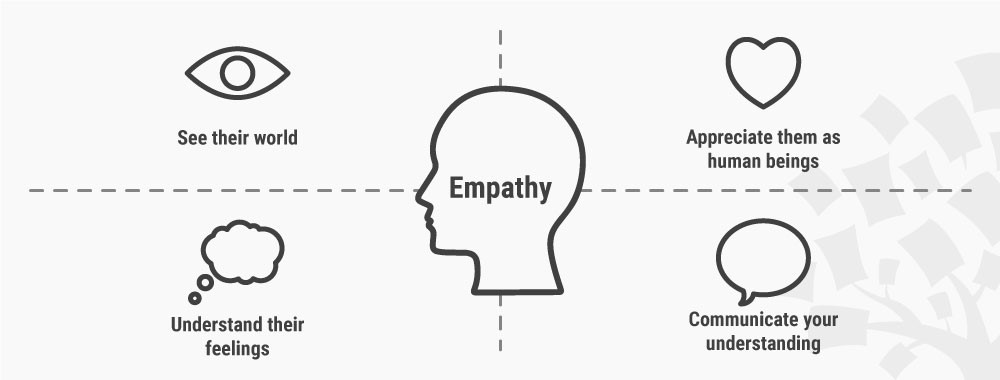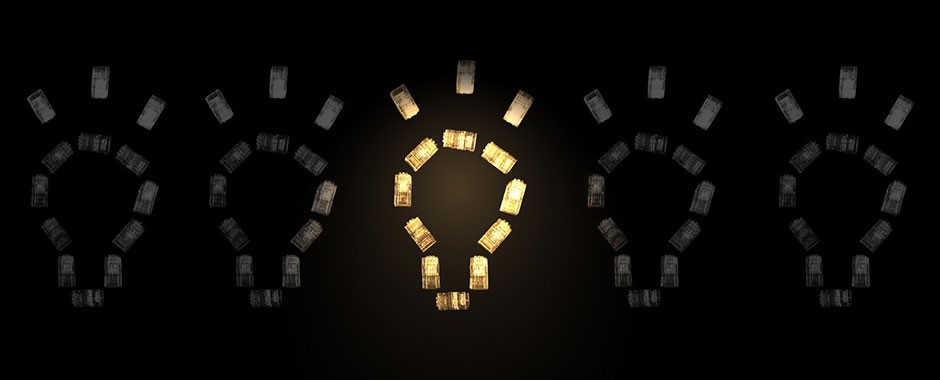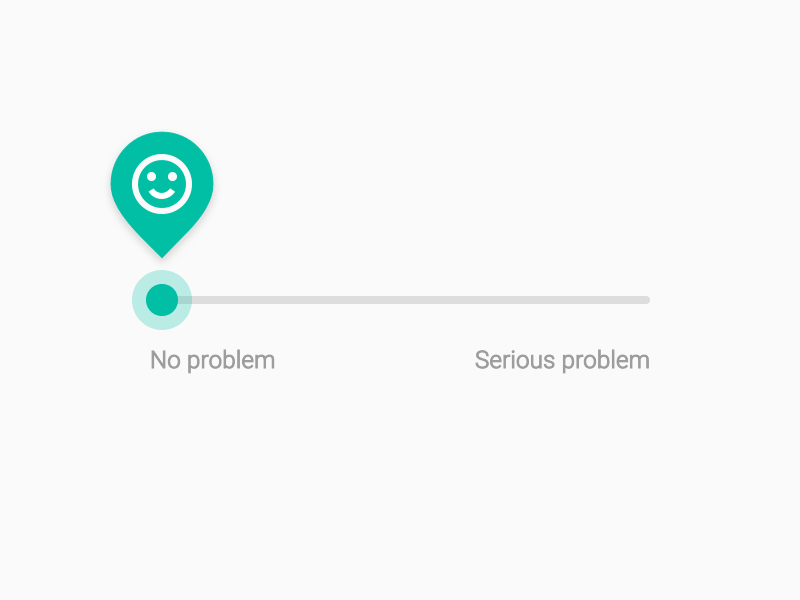 Back to all articles
Back to all articles
Blogs
5 Design Thinking Principles to apply in Software Product Development


How do you solve your daily life problems? Do you start with identifying the root cause or quickly come up with a solution using the same old strategy?
Undoubtedly, you all have your ways of solving problems, but the way you think about problems directly influences your ability to solve them.
Do you know what’s special about design thinking? This approach is not restricted to software product development only, but all the great innovators have practiced it to solve problems creatively.
Just because businesses today are in quest of building stronger customer relations, the design thinking management method can help to better understand consumers, their pins and problems, and help focus on their people to make effective and profitable products.
Design thinking is an approach that intensifies the ability of a company to produce innovative solutions to complex problems that are both profitable for the company and its end-users.
This article is dedicated to product development companies that are seeking to build a customer-centric approach to achieve their software objectives.
Design thinking: a personalized experience
Design thinking is a method for practical and creative problem-solving as its core design thinking focuses on understanding people’s needs and creatively discovering the best solution to meet those needs.
Design thinking is now a widely used methodology across private and public sectors for creating sleek new technologies and products.
It counts on:
- Creating a permanent imprint on their potential audiences
- Uncovering consumer pain points
- Tackling ambiguous hitches
- Discovering innovative solutions to complex problems
- Creating prototypes and then test to check the efficacy
“We spend a lot of time designing the bridge, but not enough time thinking about the people who are crossing it.”
Dr. Prabhjot Singht, Director of Systems Design at the Earth Institute
Design thinking: Become the logic of user-experience
Someone said: “Being faced with a problem becomes a problem. And that's a problem because there are always going to be problems!”
Like said earlier, you are always bumping into new problems, and while you try to solve them, it sometimes gets difficult to even think where to start from. If you are solving a problem for your end-users, why not try to solve by approaching it from the user’s perspective.
Though, design thinking principles are drilled down into three phases: immersion, ideation, and implementation but these exercises themselves are very flexible. Every company, every designer, every product manager can do it differently but the five actionable stages derived from the above three phases will always remain the same.
- Empathize
- Define
- Ideate
- Prototype
- Test

5 Principles Of Design Thinking To Apply
Let’s closely inspect the five different stages of Design Thinking to learn how real users think, feel, and behave.
1- Empathize: Get to know the target audience
In this phase, a lot of time it is about gathering information to paint a clear picture of who the users are, what challenges do they face, and what do they need?
Empathy is to go out and experience what end-users are experiencing. How can you know their minds if you don't walk in their shoes? If you do that, you can hear the unspoken.

So go out, listen to your customers, you will learn a lot from them. This can be achieved by interviewing them, conducting surveys, and other possible ways.
2- Define the Problem Statement
During the second stage of design thinking, you put together all of the collected information during the first stage to analyze the user’s needs over the business goals.
From your trip to the end-users journey, all of the insights and all of the surprized learnings will make you believe that you are now solving the right problems.
For example, do you know what causes traffic jams? Of course, you would say a sheer number of people on the road and all in a hurry.
But after experiencing it yourself you will come to know that the real culprit is ‘the speed’. The concept is explained as: when drivers travel at a constant speed, traffic flows freely but even if a single driver breaks the speed line the flow is interrupted causing a chain reaction among the vehicles behind that driver.
3- You Are Ready to Ideate
They say
‘when you change the way you look at things, things begin to change.’
After you have understood your user’s needs, you have analyzed the problem-statement, now is the time to ‘brainstorm.’ To come up with solutions to the problem statement that you derived from the previous two steps by carefully matching your solutions with the insights you figured out.

4- Prototype
This is the stage where designers jump in to design inexpensive, low-scale versions of the product idea.
The goal is to have something tangible to be tested on real people i.e your end-users to gather feedback just to check if something still needs to be reworked.
Prototypes can be tested within the product development team itself, in other departments just to have a clear view of how end-users would behave.
5- Testing
How do you know if your idea is going to work? Of course by testing it.

This is the final stage of your design thinking process where you take the product to your end-users and directly ask for their feedback. Again, it is an iterative process because there is a potential chance of needing further improvements.
Even after surviving the whole process, some alterations and refinements can still be needed as a deep understanding of the product.
Key Point
It is to understand that the above mentioned five stages do not require a pattern to follow, only the stages must be understood. The approach encourages the organizations to focus on the people they're creating for, which leads to better products, services, and internal processes.
Conclusion
Design thinking offers principles that permit you to see a problem and find a potential solution. The thing about needing continuous improvement is a never-ending process. You will always look for a better solution every time you face a difficulty.
Nextbridge always tries to achieve user-focused products; our focus is to design products that delight our users. If you have a unique idea, you can consider a consultation at any time you want.
You can get technical support, call our Business Development Manager, or directly drop in an email.
Don't hire us right away
talk to our experts first,
Share your challenges, & then decide if we're the right fit for you! Talk to Us
Partnerships & Recognition
Commitment to excellence






